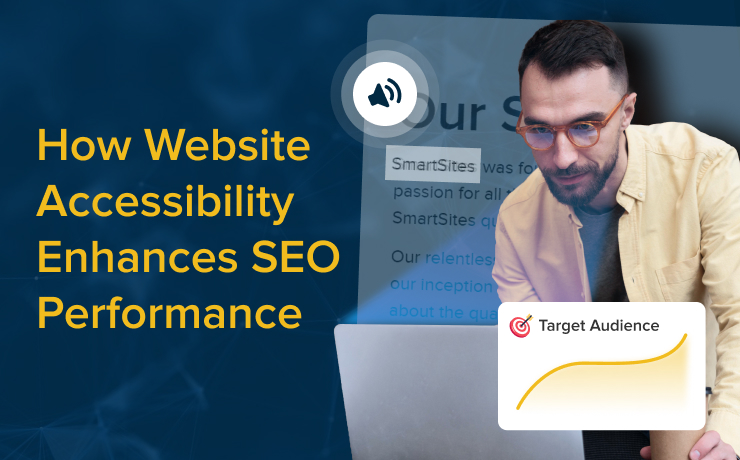
Website accessibility is now a critical component of a well-rounded online presence. For website owners and marketing professionals, accessibility might seem like a matter of compliance. Its impact, however, stretches far beyond that. Website accessibility ensures that people with disabilities can easily navigate and consume content. Additionally, it directly influences how well a site performs in search engine rankings.
Search engines like Google prioritize delivering the best user experience, and accessible websites contribute to that mission. By making your site more accessible, you’re not only enhancing usability for a wider audience but also improving your SEO (Search Engine Optimization) performance. In this guide, we’ll explore how optimizing for accessibility directly correlates with better SEO outcomes.
Understanding the Relationship Between Website Accessibility and SEO
Accessibility and SEO share a common goal: improving the user experience. When search engines rank websites, they consider how user-friendly the site is for all visitors, including those with disabilities. To understand the relationship between website accessibility and SEO, it’s important to recognize how accessibility best practices overlap with search engine optimization techniques.
Why Website Accessibility is Important for SEO
Website accessibility ensures that your site is usable by everyone, including individuals with visual, auditory, cognitive, or motor disabilities. This broad accessibility increases your website’s overall reach. At the same time, many accessibility features directly influence how search engines perceive and rank your site.
For example, providing descriptive alt text for images not only helps visually impaired users understand the content but also provides search engines with additional context for indexing the page. Similarly, well-structured headings help screen readers navigate and improve the search engine’s ability to understand the content hierarchy of your page.
By improving accessibility, you’re optimizing your website for a better user experience—one that search engines are keen to reward with higher rankings.
How Does Accessibility Affect SEO Rankings?
Let’s explore how optimizing images, heading structure, and mobile responsiveness can benefit both accessibility and SEO.
Optimizing Images for SEO Accessibility
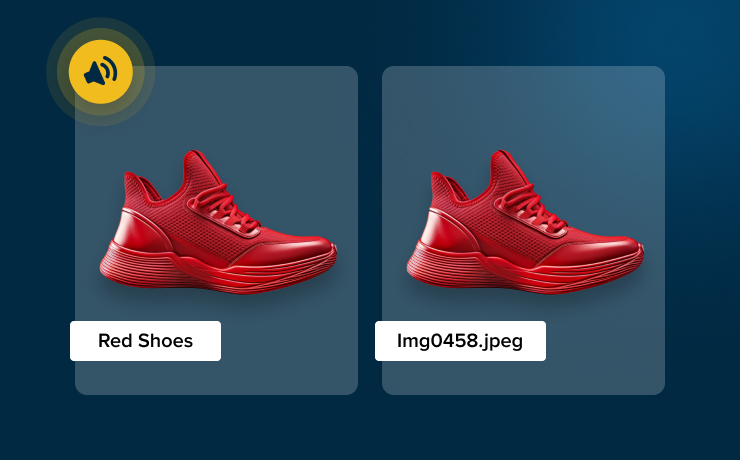
Images are a fundamental component of many websites, but they present a challenge for users with visual impairments. Adding descriptive alt text to images is a key practice for making websites accessible to screen readers. Alt text serves as a textual description of an image. It allows visually impaired users to understand what’s being displayed even when they can’t see the image itself.
From an SEO perspective, alt text is equally important because search engine crawlers can’t “see” images—they rely on alt text to understand the context and content of the image. By providing descriptive and relevant alt text, you help search engines index your images correctly. This method can improve your site’s visibility in image searches and overall SEO rankings.
To optimize alt text:
- Be descriptive: Explain what the image shows as clearly as possible.
- Use keywords naturally: If relevant, include your target SEO keywords, but avoid keyword stuffing.
- Keep it concise: Aim for 125 characters or fewer to ensure readability.
By following these practices, you can improve your site’s accessibility while giving search engines more data to use when ranking your content.
Utilizing Proper Heading Structure for SEO Benefits
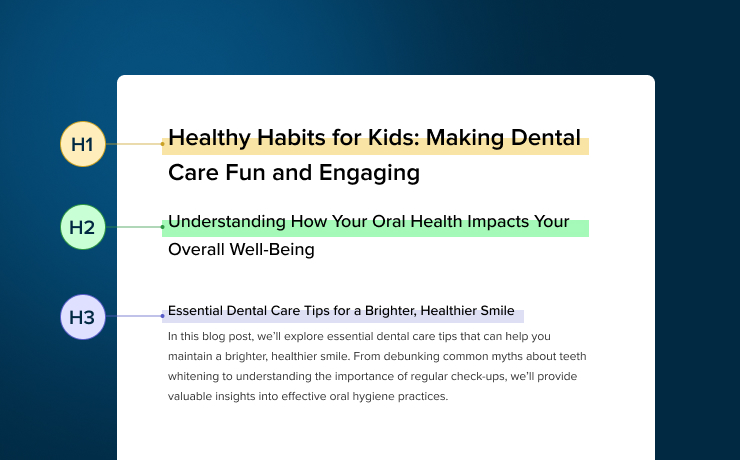
The organization of your content plays an important role in both accessibility and SEO. Screen readers rely on proper heading structures (H1, H2, H3, etc.) to navigate web pages. It is easier for users to jump between sections and understand the flow of information. Similarly, search engines use these heading structures to evaluate the importance and relevance of content.
For SEO, headings help define the hierarchy of your content. An H1 tag typically represents the main topic of the page, while H2s and H3s break down subtopics. Using a clear and logical heading structure improves readability for users and helps search engines understand the relationship between different sections of your page.
Best practices for headings:
- Only one H1 per page: This should represent the page’s main topic.
- Use H2s for subtopics: These divide the content into key sections.
- Use H3s and beyond for supporting points: These break down sub-sections and detailed information.
- Incorporate keywords: Naturally use your primary and secondary keywords in headings where relevant.
A well-structured heading hierarchy aids users with disabilities and also enhances your site’s SEO performance.
Mobile Responsiveness and SEO Performance
With the increasing number of users accessing websites via mobile devices, mobile responsiveness has become a key factor in both accessibility and SEO. Mobile responsiveness refers to how well a website adapts to different screen sizes, ensuring that users have a seamless experience whether they’re using a desktop, tablet, or smartphone.
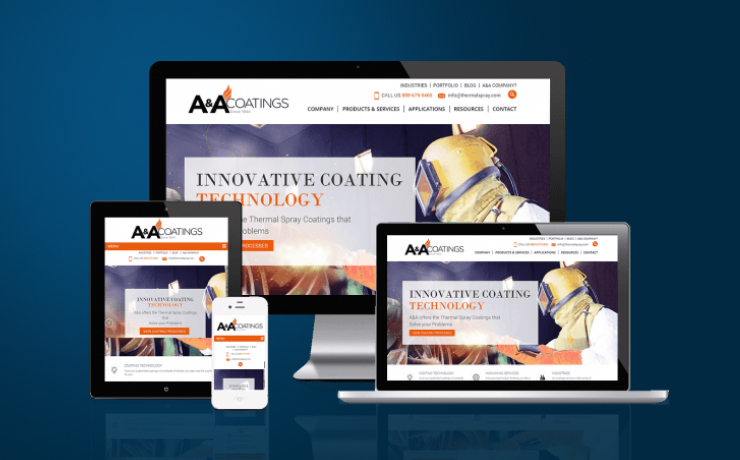
For users with disabilities, mobile responsiveness is critical. Features like larger, clickable buttons, easily readable text, and touch-friendly navigation enhance the user experience on mobile devices. Google’s algorithms also prioritize mobile-friendly websites, rewarding them with higher rankings in search results.
To improve mobile responsiveness:
- Use responsive design: Ensure that your website automatically adjusts to fit different screen sizes.
- Optimize loading times: Compress images, leverage browser caching, and minimize redirects to improve page speed.
- Ensure touch-friendly elements: Buttons and links should be large enough to tap comfortably on small screens.
By enhancing your site’s mobile responsiveness, you’re ensuring it’s accessible to all users, including those with disabilities, while also meeting Google’s mobile-first indexing standards.
The Role of Accessibility in User Experience and SEO
User experience (UX) is a major factor that impacts both accessibility and SEO. A website that is easy to navigate, understand, and engage with will perform better in search engine rankings and keep users coming back. Let’s examine how accessibility improvements can reduce bounce rates and enhance user engagement—two key metrics for SEO success.
Reducing Bounce Rates Through Accessibility Improvements
Bounce rate refers to the percentage of visitors who leave a website after viewing only one page. A high bounce rate often signals that users are dissatisfied with their experience, whether due to slow loading times, poor design, or content that’s difficult to access.
By improving accessibility, you reduce barriers that might cause users to leave your site prematurely. For example, users with visual impairments may struggle with tiny fonts or poor color contrast. Similarly, users who rely on keyboard navigation may find it impossible to interact with certain elements if they’re not properly coded for accessibility. Addressing these issues creates a more user-friendly environment that encourages visitors to stay longer and explore more pages.
A lower bounce rate signals to search engines that your website provides a positive user experience, which can improve your rankings.
Enhancing User Engagement and SEO Performance
User engagement is another critical factor that search engines consider when ranking websites. Accessible websites encourage more engagement by making it easier for all users to interact with content. This includes everything from reading articles to filling out forms, watching videos, or using interactive tools.
Consider features like closed captions for videos, which benefit users with hearing impairments while also making your content more accessible to search engines. Engaged users are more likely to spend time on your site, share your content, and return in the future—all of which can positively impact SEO performance.
Why You Should Have an Accessible Website for SEO
Creating an accessible website isn’t just about meeting legal requirements; it’s a smart business decision that can drive better SEO outcomes. Accessible websites attract more traffic, improve user experience, and make it easier for search engines to index your content. Let’s explore some key benefits of having an accessible website for SEO.
Improving User Experience with Website Accessibility
An accessible website delivers a better user experience for everyone, not just those with disabilities. Features like readable fonts, intuitive navigation, and clear content structures make it easier for all users to find what they’re looking for. The more user-friendly your website is, the more likely visitors are to stay, explore, and engage with your content.
Search engines prioritize websites that provide a positive user experience. By focusing on accessibility, you’re making your site more navigable and enjoyable for users, which will likely result in higher search rankings.
Increasing Organic Traffic through Accessible Design
As your website becomes more accessible, you’ll likely see an increase in organic traffic. Search engines reward sites that adhere to best practices for accessibility because they provide a better overall experience. Users with disabilities represent a significant portion of the population, and by making your site accessible, you’re opening the door to a wider audience.
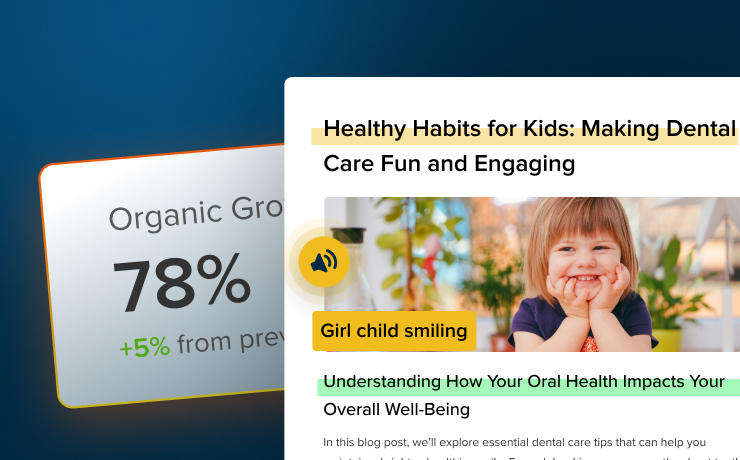
Additionally, accessible design can improve your site’s visibility in search results. Features like alt text, proper headings, and mobile-friendly design help search engines understand your content better, leading to higher rankings and more organic traffic.
Enhancing Website Crawlability and Indexing
Search engines use automated bots, called crawlers, to navigate and index websites. The easier it is for these crawlers to understand your content, the better your chances of ranking well. Accessible websites are often easier for crawlers to navigate because they use clean, well-structured HTML, descriptive alt text, and properly coded elements.
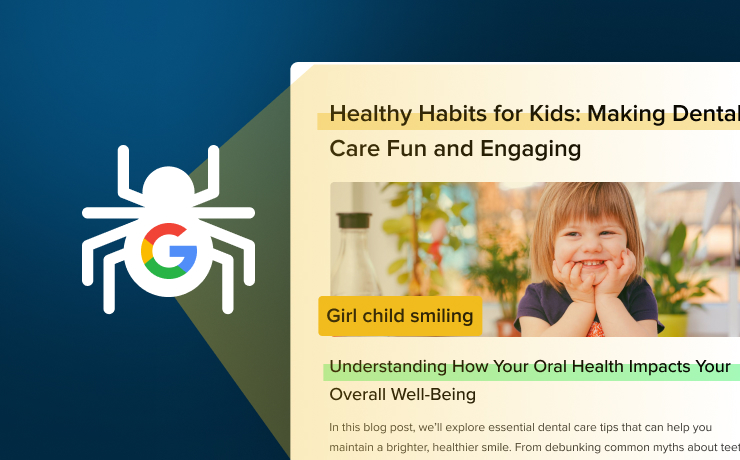
For example, if your site is well-organized with clear headings and alt text, crawlers can more easily determine the relevance of your content to user queries. This improves your chances of ranking for relevant keywords and appearing in search engine results pages (SERPs).
Website accessibility and SEO are deeply interconnected, both working to create a better user experience for all visitors. By focusing on accessibility, you’re not only making your website more inclusive for people with disabilities, but you’re also positioning your site to rank higher in search engine results. From optimizing images with alt text to ensuring mobile responsiveness, every step you take toward improving accessibility will also enhance your SEO performance.
The message is clear: accessibility is good for business. It improves user experience, drives more organic traffic, reduces bounce rates, and makes your website easier to crawl and index. By embracing accessibility, you’re setting your website up for long-term SEO success.
If you haven’t already, it’s time to make website accessibility a top priority in your SEO strategy. The rewards—both in terms of user satisfaction and search engine performance—are undeniable.
 Free
Consultation
Free
Consultation Free
Google Ads Audit
Free
Google Ads Audit








